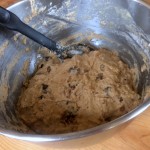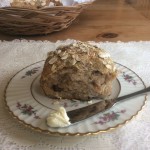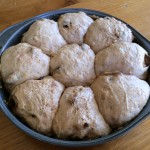The classic must-have Thanksgiving dishes of today vaguely resemble what historians say was served at the “First Thanksgiving,” shared by the Pilgrims and Wampanoag people at Plymouth Colony in 1621, according to an article “What Was on The Menu at the First Thanksgiving” (Reference 1).
Wild turkeys were available but they were more likely to have eaten goose, duck and venison at the three-day feast. White potatoes, from South America, and sweet potatoes originating in the Caribbean had not yet arrived in North America. Cranberries were not yet on menus either.
The diverse diet of the Wamapanoag included chestnuts, walnuts, corn (flint corn), pumpkin and squash – foods we associate with our holiday feast, however the colonists didn’t have butter and wheat flour so pies and bread as we know it were not made.
We don’t give much thought to historical roots when planning today’s Thanksgiving menus but people do have strong opinions and fixed food traditions that must be honored. My sister must have creamed onions; a friend always includes scalloped oysters and another can’t launch the holiday feast without cracked crab. Others share how they include specialties from their family culture, serving Persian, Korean or Mexican feast dishes alongside the turkey and pumpkin pie.
I can’t imagine “breaking bread” at a feast of thanks without homemade rolls so I created this recipe recipe for Valley Fig Grower’s November Newsletter: Rustic Grain, Fig and Walnut Rolls that you can link to HERE.
You won’t find these rolls at your local bakery or market. They include oats, cornmeal and whole wheat flour, chewy figs, crunchy walnuts and orange zest. The streamlined, no knead method allows you to fit bread making into a crazed holiday cooking schedule.
The dough is made in a single bowl and the first rising period takes place in the refrigerator where you can leave the dough for up to 48 hours before baking.

Photo by Lorelle Del Matto
A slightly sticky dough will result in more moist rolls. Try oiling your hands and work surface instead of adding more flour when handling dough.
The recipe makes 18 rolls (two pans of 9) so there’s plenty for a large crowd. Or, bring one pan to a small gathering and make a gift of the other.
While the feast elements have evolved, the significance of gathering to express gratitude over a table of special foods remains. Thankfully.
Reference
What Was on the Menu At the First Thanksgiving, by Megan Gambino, Smithsonian.com
© Lorelle Del Matto 2015


 About lorelle
About lorelle
Speak Your Mind